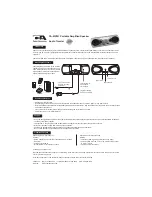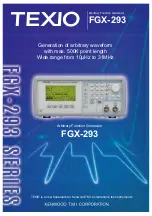
Maintenance
General Recommendations
Regular maintenance will improve the performance and
extend the life of the generator. See an authorized dealer for
service.
The generator’s warranty does not cover items that have
been subjected to operator abuse or negligence. To receive
full value from the warranty, the operator must maintain the
generator as instructed in this manual and the engine
operator’s manual.
NOTICE
Should you have questions about replacing
components on your generator, please call
(800) 743-4115
for assistance.
• Some adjustments will need to be made periodically to
properly maintain your generator.
• All maintenance in this manual and the engine
operator’s manual should be made at least once each
season.
• Once a year you should clean or replace the spark plug,
clean or replace the air filter. A new spark plug and
clean air filter assure proper fuel-air mixture and help
your engine run better and last longer. Please refer to
your engine operator’s manual for more details.
Generator Maintenance
Generator maintenance consists of keeping the unit clean
and dry. Operate and store the unit in a clean dry
environment where it will not be exposed to excessive dust,
dirt, moisture, or any corrosive vapors. Cooling air slots in
the generator must not become clogged with snow, leaves,
or any other foreign material.
NOTICE
DO NOT use water or other liquids to clean
generator. Liquids can enter engine fuel system, causing
poor performance and/or failure to occur. In addition, if
liquid enters generator through cooling air slots, some of the
liquid will be retained in voids and cracks of the rotor and
stator winding insulation. Liquid and dirt buildup on the
generator internal windings will eventually decrease the
insulation resistance of these windings.
Cleaning
Daily or before use, look around and underneath the
generator for signs of oil or fuel leaks. Clean accumulated
debris from inside and outside the generator. Keep the
linkage, spring and other engine controls clean. Keep the
area around and behind the muffler free from any
combustible debris. Inspect cooling air slots and openings
on generator. These openings must be kept clean and
unobstructed.
Engine parts should be kept clean to reduce the risk of
overheating and ignition of accumulated debris:
• Use a damp cloth to wipe exterior surfaces clean.
NOTICE
Improper treatment of generator could damage it
and shorten its life.
• DO NOT expose generator to excessive moisture, dust, dirt, or
corrosive vapors.
• DO NOT insert any objects through cooling slots.
• Use a soft bristle brush to loosen caked on dirt or oil.
• Use a vacuum cleaner to pick up loose dirt and debris.
Inspect Muffler and Spark Arrester
Inspect the muffler for cracks, corrosion, or other damage.
Remove the spark arrester, if equipped, and inspect for
damage or carbon blockage. If replacement parts are
required, make sure to use only original equipment
replacement parts.
16
www.voxindustrial.com
WARNING
Exhaust heat/gases could ignite
combustibles, structures or damage fuel
tank causing a fire, resulting in death,
serious injury and/or property damage.
Contact with muffler area could cause burns resulting in
serious injury.
• DO NOT touch hot parts and AVOID hot exhaust gases.
• Allow equipment to cool before touching.
• Keep at least 5 feet (1.5 m) of clearance on all sides of
generator including overhead.
• It is a violation of California Public Resource Code, Section
4442, to use or operate the engine on any forest-covered,
brush-covered, or grass-covered land unless the exhaust
system is equipped with a spark arrester, as defined in Section
4442, maintained in effective working order. Other states or
federal jurisdictions may have similar laws.
Contact the original equipment manufacturer, retailer, or dealer
to obtain a spark arrester designed for the exhaust system
installed on this engine.
• Replacement parts must be the same and installed in the same
position as the original parts.
Not
for
Reproduction
















































